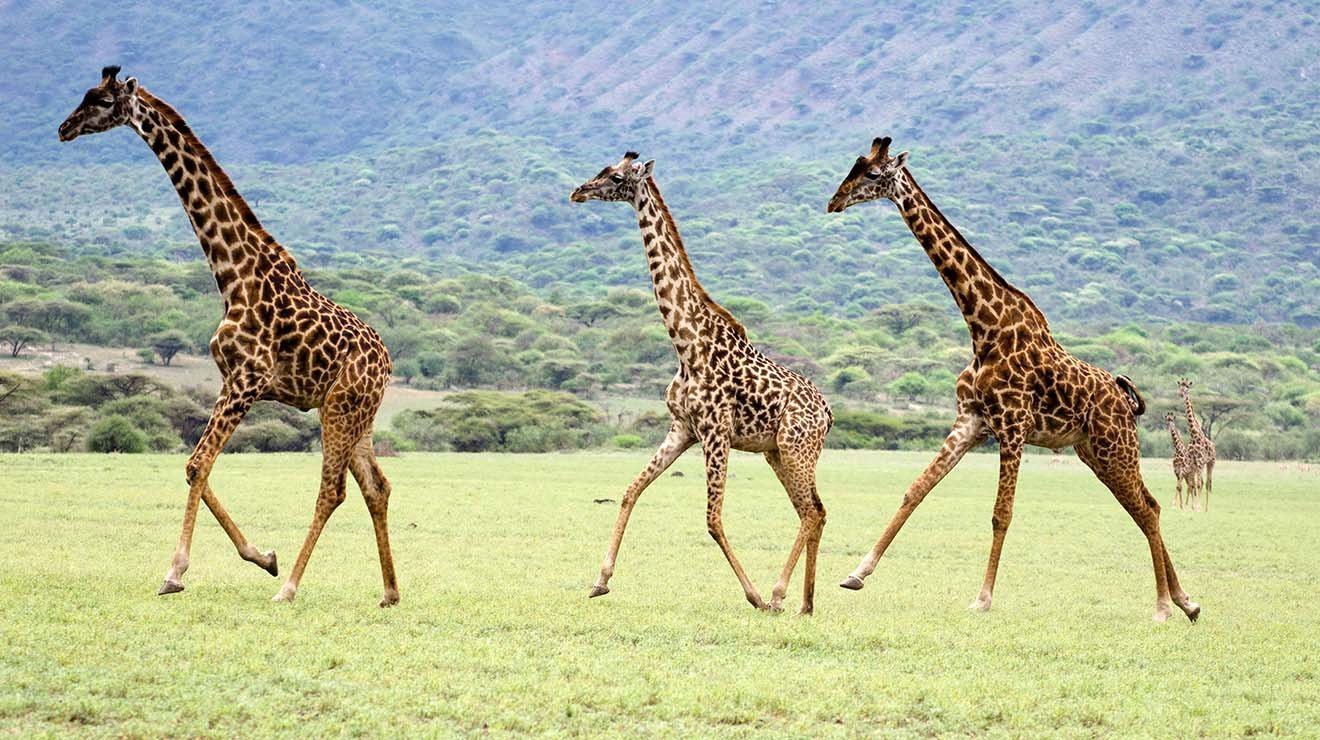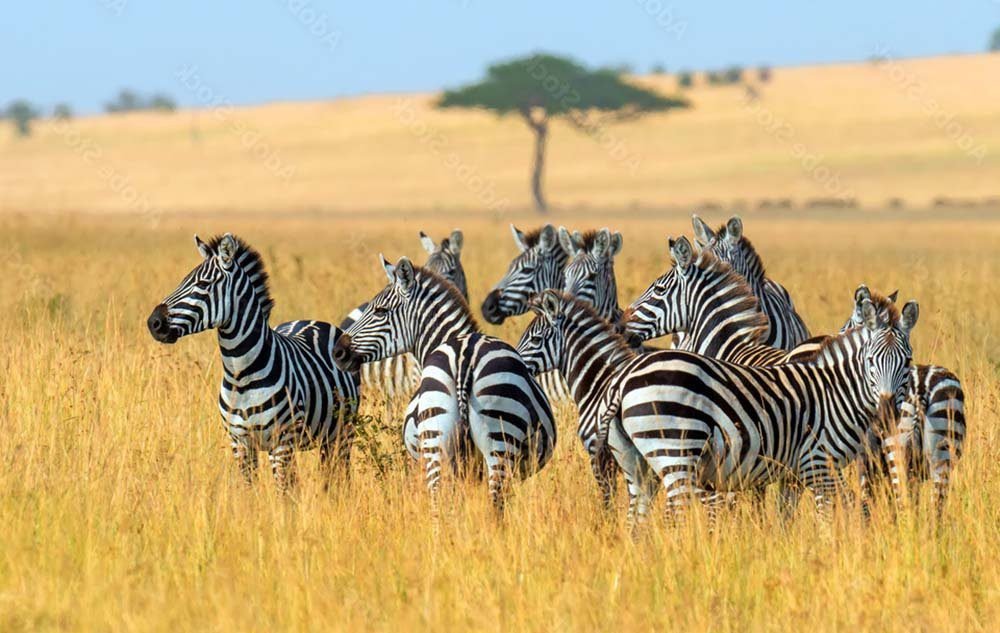Serengeti National Park
It was 1913 and great stretches of Africa were still unknown to the white man when Stewart Edward White, an American hunter, set out from Nairobi.
Pushing south, he recorded: “We walked for miles over burnt out country… Then I saw the green trees of the river, walked two miles more and found myself in paradise.” He had found Serengeti. In the years since White’s excursion under “the high noble arc of the cloudless African sky,” Serengeti has come to symbolize paradise to many of us. The Maasai, who had grazed their cattle on the vast grassy plains for millennia had always thought so. To them it was Siringitu – “the place where the land moves on forever.”
The Serengeti region encompasses the Serengeti National Park itself, the Ngorongoro Conservation Area, Maswa Game Reserve, the Loliondo, Grumeti and Ikorongo
Controlled Areas and the Maasai Mara National Reserve in Kenya. Over 90,000 tourists visit the Park each year.

The Serengeti ecosystem is one of the oldest on earth.
The essential features of climate, vegetation and fauna have barely changed in the past million years.
Early man himself made an appearance in Olduvai Gorge about two million years ago. Some patterns of life, death, adaptation and migration are as old as the hills themselves.
Two World Heritage Sites and two Biosphere Reserves have been established within the 30,000 km² region. It’s unique ecosystem has inspired writers from Ernest Hemingway to Peter Mattheissen, filmakers like Hugo von Lawick and Alan Root as well as numerous photographers and scientists.
The Migration
 It is the migration for which Serengeti is perhaps most famous. Over a million wildebeest and about 200,000 zebras flow south from the northern hills to the southern plains for the short rains every October and November, and then swirl west and north after the long rains in April, May and June. So strong is the ancient instinct to move that no drought, gorge or crocodile infested river can hold them back.
It is the migration for which Serengeti is perhaps most famous. Over a million wildebeest and about 200,000 zebras flow south from the northern hills to the southern plains for the short rains every October and November, and then swirl west and north after the long rains in April, May and June. So strong is the ancient instinct to move that no drought, gorge or crocodile infested river can hold them back.
The Wildebeest travel through a variety of parks, reserves and protected areas and through a variety of habitat. Join us to explore the different forms of vegetation and landscapes of the Serengeti ecosystem and meet some of their most fascinating inhabitants.
Africa’s Serengeti Migration is known as the greatest animal show on earth. Wild animals on the move blanket the African landscape as far as the eye can see.
Over a million wildebeest and about 200,000 zebras flow south from the northern hills to the southern plains for the short rains every October and November, and then swirl west and north after the long rains in April, May and June. So strong is the ancient instinct to move that no drought, gorge or crocodile infested river can hold them back.
When the water and grazing disappear in one area due to a seasonal drought the wildebeest need move along to where the seasonal rains are falling to survive by finding new grazing and water. The wildebeest have to cross a number of rivers in their perilous but amazing 300 mile journey like the Grumeti and the Mara in the north and this is where a lot of them don’t make it falling prey to crocodiles and drowning. Only the very fittest survive. They are also preyed on by lion, leopard, cheetah and hyena as they have no choice but to move through the territories occupied by these predators in their quest for fresh grass. The predators have a food bonanza when the migration passes through their territory
The best time to experience the Serengeti Migration
It’s important to remember that there are no guarantees when it comes to the timing of the migration. It’s all dependent on the rain and the seasons start at different times every year which means the herds might not be where historically they should be. You can make a rough estimate based on the past and hope that things run accordingly. Historically the times to see the migration in the Serengeti are…
January:
The massive herds of wildebeest, zebra and gazelle are to be found on the plains of the southern Serengeti.
February:
The wildebeest begin foaling and they do this at roughly the same time with all the predators in close attendance. Many people only want to see the migration and don’t realise that this is a comparable wildlife spectacle. One of the best times to see the predators.
March – April:
Heavy rains are approaching and the grazing is starting to get worse. The herd begins to move northwards along the western corridor of the Serengeti.
May – June:
The herd moves towards the Grumeti controlled area where there is still good grazing and they begin to cross the Grumeti river where crocodiles lie in wait for their annual feast and you find the scenes occurring that has made the wildebeest migration famous in so many wildlife documentaries.
July – August:
The herd is drawn ever northwards towards the Masai Mara in their quest for better grazing. They have one more dangerous river to cross, the Mara, before they receive their reward in the sweet grazing plains of Kenya.



